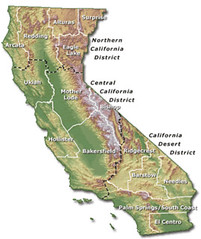Key Takeaways:
- A California Republican leader has proposed a two state solution.
- The plan would split inland counties from coastal regions.
- It faces huge legal and political obstacles.
- California voters will first decide on a redistricting fight.
- Dividing California has been debated for years.
Two State Solution Explained
A California assemblymember has unveiled a plan he calls a two state solution. He wants to carve out the inland two-thirds of the state as its own independent state. This new state would stretch from Imperial County near the Mexican border all the way up to Del Norte County by the Oregon line. Meanwhile, the coastal region would remain the state most people know today. Although this proposal drew national headlines, it has almost no chance of becoming reality.
Why the Two State Solution Gains Attention
Assemblymember James Gallagher argues that inland communities feel ignored. He says they pay taxes but see little support in schools, roads, and hospitals. Therefore, he says, a two state solution will give those residents the focus they need. On the coast, most voters lean Democratic. Inland areas lean more Republican. Gallagher’s plan would create a border that matches those voting lines. However, many experts call the idea a political stunt.
How the Split Would Work
First, the proposal would need approval from California voters. Next, it would have to clear both state and federal hurdles. The U.S. Constitution requires any new state to be approved by the state legislature and then Congress. In this case, the California legislature is controlled by Democrats who oppose splitting the state. Even if it passed Sacramento, a Democratic U.S. Congress would likely block it. Moreover, maps for schools and services would need to be redrawn. Property lines, water rights, and highway routes would all require new agreements. Finally, new state capitals and budgets would have to be set up.
What Stands in Its Way
There are major legal barriers to the two state solution. First, the California Constitution does not allow parts of the state to secede. Second, Congress has never approved a state split in modern times. Third, many residents on the coast depend on water and electricity from inland regions. Cutting ties could disrupt those essential services. Additionally, inland counties might struggle with lower tax revenues and fewer big cities. State lawmakers and voters would likely reject a split that they see as risky and costly.
What Impact Could It Have?
If an inland state formed, it would have its own governor, legislature, and court system. It might push for different environmental rules or taxes. Meanwhile, coastal California could focus more on tech and entertainment industries. Both new states would gain two U.S. Senators each. That means California’s current four senators could become eight, shifting power in Washington. Yet, critics warn such a change could make legislation even more gridlocked.
History of Proposals
This is not the first time California’s breakup has been debated. Back in 2014, a billionaire pitched a plan to split the state into six parts. That idea failed to make the ballot from lack of signatures. Over the years, other visions have called for three or four states. Each time, they faced the same legal and political roadblocks. Still, the talk keeps coming back whenever state politics grow tense.
Redistricting Retaliation
Gallagher’s announcement arrived after Governor Gavin Newsom and the legislature pushed a ballot measure on redistricting. That measure would let lawmakers override the state’s independent commission. They want to redraw congressional seats to remove up to five Republican districts. The move responds to a GOP redraw in Texas that did the same to Democrats. Gallagher says inland voters feel unfairly targeted by those power plays. He links the redistricting fight to his call for a two state solution.
What Comes Next
At this point, the two state solution is more of a talking point than a real plan. The legislature must first vote on a split treaty. Then, California voters need to approve it. Finally, Congress would have to sign off. That sequence makes the timeline take years or even decades. Meanwhile, the redistricting fight will land on the November ballot. If voters reject partisan maps, it could ease some tensions. However, if they approve them, divisions may deepen and new proposals could follow.
FAQs
Could California voters actually approve a split?
Voters would face a referendum on the proposal. But even if they agreed, the state legislature could block it before it reached Congress.
What role does Congress play in this?
Under the Constitution, any new state needs congressional approval. Without it, a split cannot happen.
Which counties would join the inland state?
Counties from Imperial in the southeast to Del Norte in the northwest would form the new inland state. Coastal counties would stay in the current state.
How does the redistricting ballot measure tie in?
The redistricting vote would let lawmakers redraw maps. Supporters say it fights unfair partisan lines. Opponents call it retaliation and fear more division.

